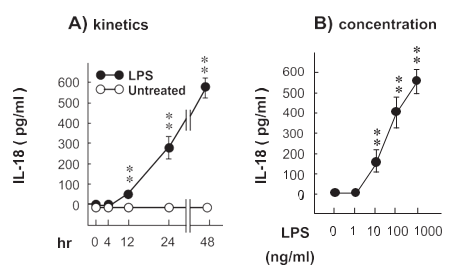Cellular signaling pathways play a pivotal role in regulating the vast array of biological functions within living organisms. These pathways, often mediated by second messengers like cyclic adenosine monophosphate (cAMP), are essential for controlling processes such as metabolism, cell growth, differentiation, and survival. Over recent years, scientists have uncovered molecules capable of finely tuning these signaling systems, offering both new research tools and potential therapeutic strategies for a variety of diseases.
The Role of Signaling Pathways in Disease
Signaling pathways are crucial for maintaining normal cellular function, and when they become dysregulated, they can lead to a variety of diseases. For example, in cardiovascular disease, disruptions in cardiac cell signaling impair the heart’s ability to contract, leading to conditions like heart failure. Similarly, in neurodegenerative diseases such as Alzheimer’s and Parkinson’s, impaired cell signaling contributes to the progressive loss of cognitive and motor functions. Certain cancers also arise due to abnormal cell proliferation and growth, which are often driven by alterations in signaling pathways.
One key signaling molecule, cAMP, plays an essential role in regulating cellular functions across many tissues. By activating protein kinase A (PKA) and other downstream effectors, cAMP affects a wide range of cellular processes, including metabolism, cell proliferation, gene expression, and synaptic transmission. The levels and activity of cAMP can significantly influence cellular behavior, both in healthy and diseased states.
Enhancing Cellular Signaling: New Molecular Tools
In recent years, researchers have developed a variety of molecular tools that allow for precise modulation of cAMP levels in cells. These tools have not only provided valuable insights into basic cellular mechanisms but also hold promise as therapeutic agents in treating a range of diseases.
Certain small molecules have been designed to mimic the effects of cAMP, boosting cellular cAMP levels and modulating downstream signaling pathways. By enhancing cAMP signaling, these molecules can influence cell growth, survival, and differentiation, making them powerful candidates for treating diseases ranging from cardiovascular disorders to cancer and neurodegenerative diseases.
Applications in Cardiovascular Disease
Cardiovascular diseases, particularly heart failure, remain one of the leading causes of death worldwide. In heart failure, the heart muscle’s ability to contract is compromised, often due to a decrease in cAMP signaling within cardiac cells. Low levels of cAMP impair the function of heart muscle cells, reducing the heart’s pumping capacity.
Research has shown that increasing cAMP levels can improve heart muscle function by activating cAMP-dependent pathways. Small molecules that boost cAMP have been studied for their potential to enhance myocardial contractility and overall heart function. In preclinical models, these molecules have demonstrated the ability to improve cardiac performance, offering a potential adjunctive therapy for patients with severe heart failure who do not respond to traditional treatments.
Exploring Therapeutic Applications in Neurodegenerative Diseases
Neurodegenerative diseases such as Alzheimer’s disease and Parkinson’s disease are characterized by the gradual degeneration of neurons, leading to cognitive and motor impairments. In these conditions, alterations in cAMP signaling contribute to neuronal dysfunction and death.
Studies suggest that increasing cAMP levels could enhance synaptic plasticity and neuronal survival, offering a new avenue for treating neurodegenerative diseases. By boosting cAMP, researchers hope to improve neuronal communication and slow the progression of these diseases. Moreover, enhancing cAMP signaling has the potential to promote the regeneration of neurons, making it a promising strategy for addressing conditions where neuronal loss is prominent.
The Role of cAMP in Cancer Therapy
In cancer research, cAMP signaling has also attracted significant attention. Many types of cancer, such as breast cancer and lung cancer, are driven by abnormal signaling pathways that promote uncontrolled cell proliferation and metastasis. Dysregulated cAMP signaling is often observed in these cancers, contributing to the growth and spread of tumor cells.
Interestingly, elevated cAMP levels can inhibit certain oncogenic pathways, suppressing cancer cell growth and inducing apoptosis (programmed cell death). Some studies have shown that by using molecules that boost cAMP, researchers can slow tumor progression and promote cancer cell death. This approach has shown promise, particularly in cancers resistant to conventional therapies like chemotherapy and radiation, offering a novel strategy for cancer treatment.
Challenges and Future Prospects
Despite the promising therapeutic potential of modulating cAMP signaling, there are still challenges to overcome. One concern is the long-term effects of sustained cAMP elevation. While boosting cAMP can have therapeutic benefits, chronic activation of cAMP pathways may lead to undesirable side effects, such as excessive cell proliferation or metabolic disturbances. Therefore, precise control over cAMP levels is essential to maximize therapeutic efficacy while minimizing risks.
Moreover, cell-specific targeting remains a challenge. Different tissues and cell types respond differently to cAMP signaling, meaning that therapeutic molecules must be carefully designed to target specific cells or organs. Researchers are working on developing more refined molecules that can selectively modulate cAMP signaling in specific tissues, thus improving the precision and effectiveness of treatments.
Conclusion
By harnessing the power of cellular signaling, particularly through the modulation of cAMP pathways, scientists are opening up new frontiers in the treatment of diseases such as cardiovascular conditions, neurodegenerative disorders, and cancer. Although challenges remain in terms of safety and specificity, ongoing research is paving the way for more targeted and effective therapies. With further refinement and clinical validation, molecules that regulate cAMP signaling could become vital tools in the treatment of some of the most challenging and prevalent diseases in modern medicine.
